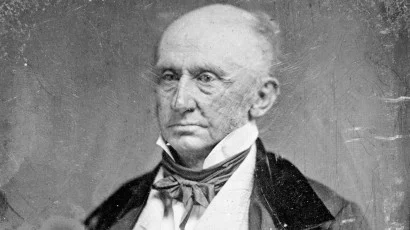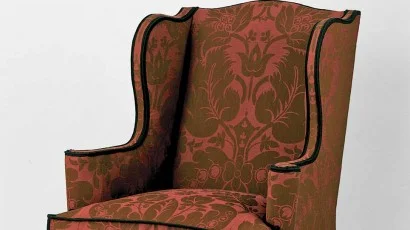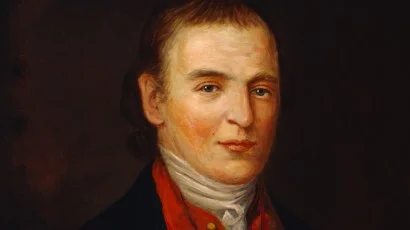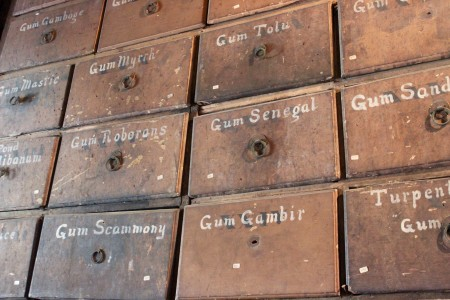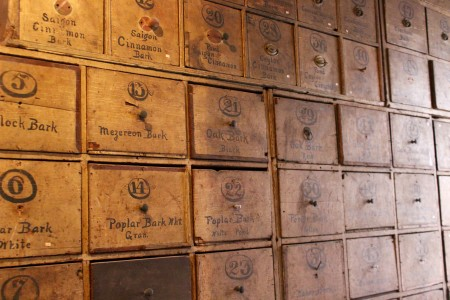Cancer was no stranger to the Washington family. Like many modern families across the world today, they experienced the agony of the disease and the inadequacy of many medical treatments.
According to the Centers for Disease Control and Prevention (CDC), each year worldwide, 14 million people learn they have cancer and 8 million people die from the disease. (1) Though accurate statistics of cancer-related deaths in the 18th century are unknown, the Washington family surely experienced the emotional trauma and physical suffering this malady brings.
Despite the myriad benefits of modern treatments and medical advancements, the pain, misery, and loss associated with this disease are universal. Such anguish is poignantly expressed by George Washington in his letter to Henry Knox on April 27, 1787, after learning that his mother, Mary Ball Washington, was in the final stages of her fight against breast cancer – and that a sister, Betty Washington Lewis, was also ailing as well.
Washington writes, “I am summoned by an express who assures me not a moment is to be lost, to see a mother and only sister (who are supposed to be in the agonies of death) expire; and I am hastening to obey this melancholy call, after having just bid an eternal farewell to a much loved brother who was the intimate companion of my youth and the most affectionate friend of my ripened age." (2)

Washington traveled to his mother’s small house on Charles Street in Fredericksburg, Virginia that same day. Tutor William Fogg wrote from the city that “General Washington has been here to see his mother who has been ill…” Thankfully, Washington found both his mother and sister “better than (he) expected”, and returned home on April 30.
The Search for a Cure
Even in Washington’s day, there was an urgent search for cancer’s cure. George Washington wrote to Dr. Hugh Martin, a surgeon of the Eighth Pennsylvania Regiment on October 20, 1782. Dr. Hugh Martin had allegedly learned the formula for his famous “cancer cure” from the Indians while stationed as a military surgeon at Fort Pitt during the Revolutionary War. The publication Washington describes below was likely Dr. Martin’s A Narrative of a Discovery of a Sovereign Specific, for the Cure of Cancers, published in Philadelphia that same year.
“I have received and thank you for the 2 copies of your narrative of a discovery for a cure of cancers; one of which agreeably to your request I have transmitted to Mrs. Washington. The discovery is as beneficial to mankind as it would be regretted by them if the secret, being only known to one man, should die with him…” (3)
Dr. Benjamin Rush, a noted civic leader, physician, and Revolutionary in Philadelphia, wrote to his cousin Dr. Elisha Hall about Mary Ball Washington’s condition in July 1789. Dr. Hall was treating Mrs. Washington and had sought Dr. Rush’s professional counsel.
Dr. Rush writes, “The respectable age and character of your venerable patient [Mary Ball Washington] lead me to regret that it is not in my power to suggest a remedy for the cure of the disorder you have described in her breast." (4)
The letter continues to describe how a root found in the Carolinas and Georgia that Dr. Hall had previously mentioned would not help Washington’s mother, as Dr. Rush believed “there does not exist in the vegetable kingdom an antidote to cancers.”
The letter mentions mineral caustics, to include the poison arsenic, as the basis of an anti-cancer powder formulated by Dr. Hugh Martin, which Dr. Rush had used “in many cases with success, but failed in some.” Dr. Rush concludes that “from your account of Mrs. Washington’s breast, I am afraid no good can be expected from the use of it."
Dr. Benjamin Rush’s Prescription to Treat Mary Ball Washington’s Breast Cancer
Dr. Rush offered Dr. Hall this treatment regimen to administer to his patient, Mary Ball Washington.
Use Dr. Martin’s cancer powder, made from a base of arsenic, diluted in water. Apply opium and camphor and wash the area frequently with a decoction of red clover. Give anodynes (medicines meant to manage pain) when necessary, and support the system with bark and wine.Hemlock
On July 24, 1789, Washington’s sister Betty communicated their mother’s mix of acquiescence and anxiety, “I am sorry to inform you that my mother’s breast still continues bad (sic). God only knows how it will end and I dread the consequence. She is sensible of it and is perfectly resigned – wishes for nothing more than to keep it easy – she wishes to hear from you, and she will not believe you are well ‘til she has it from under your hand – the doctors think if they could get some hemlock it would be of service to her breast, if you could procure some there…”
Hemlock has been used in the treatment of tumors and joint pain since the Ancient Greeks and early Middle Eastern civilizations. In some doses, it proves poisonous. Applying hemlock to a cancerous area is a precursor to modern chemotherapy. Both intend to destroy cancerous cells, but risk damage to healthy cells as well.
The Cost of Care
Doctor and hospital bills were a huge concern in the 18th century, just like today. Finding ways to pay them, without public or private healthcare, was a considerable burden.
On October 11, 1789, Betty Washington Lewis wrote to her brother George regarding the expenses of their mother’s cancer treatments: “The doctors’ bills (are) more than I expected.”
She lists owing Dr. Elisha Hall 45 pounds and Dr. Charles Mortimer 22 pounds.
No treatment proved expedient or helpful to Mary Ball Washington and on August 25, 1789, Burgess Ball, brother-in-law [Bassett was married to Martha Washington’s sister, Anna Maria Dandridge] of George Washington wrote, “I am sorry that it devolves on me to communicate to you the loss of your mother who departed this life about 3 o’clock today. The cause of her dissolution (I believe), was the cancer on her breast, but about for 15 days she has been deprived of her speech, and for the last five days, she has remained in a sleep." (5)
Washington wrote to his sister Betty after hearing the news of their mother’s death, finding comfort in their mother’s long and full life. “Awful, and affecting as the death of a parent is, there is consolation in knowing that Heaven has spared ours to an age, beyond which few attain, and favored her with the full enjoyment of her mental faculties, and as much bodily strength as usually falls to the lot of four score. Under these considerations and a hope that she is translated to a happier place, it is the duty of her relatives to yield due submission to the decrees of the Creator…" (6)
George Washington's Skin Cancer
Dr. James Tate, a surgeon of the Third Pennsylvania Regiment during the Revolutionary War, practiced medicine in Philadelphia and Bucks County, Pennsylvania. In June 1794, he treated George Washington for a skin malady Washington believed to be cancerous – perhaps a form of melanoma. As accounts describe, Washington urged Dr. Tate to cut even deeper into his flesh so as to fully extract the cancer and thereby prevent its return.
Washington’s intuition to further excise the affected area is in line with what modern doctors consider to be “clear margins”. However, even in today’s medicine, there is no standard width that defines this margin. Dr. Tate’s excision proved successful, and Washington, by all accounts, was cancer-free.
However, according to his step-grandson, George Washington Parke Custis (Washy), Washington took further pains to safeguard his skin. “Being naturally of a very fair complexion,” Washy wrote, “his skin was liable to be affected by the influence of the sun." (7) To combat harmful rays, Washington wore a “broad brimmed white hat” and employed an umbrella to shade his skin. This umbrella was later presented by Mr. Custis to the Marquis de Lafayette, Washington’s treasured friend and confidante, in 1824.
Footnotes
(2) George Washington to Henry Knox, Mount Vernon, April 27, 1787, The Papers of George Washington, Confederation Series, 5:157-158, 158n1.
(3) George Washington to Dr. Hugh Martin, October 20, 1782, in The Writings of George Washington, 25:281 & 281n23.
(4) Dr. Benjamin Rush to Dr. Elisha Hall, July 6, 1789, in Letters of Benjamin Rush, 2 volumes, edited by L.H. Butterfield (Princeton: Published for the American Philosophical Society by Princeton University Press, 1951), 1:518, 519n1, 519n3, 519-520n4.
(5) Burgess Ball to George Washington, August 25, 1789, in The Papers of George Washington, Presidential Series, 3:536.
(6) George Washington to Betty Washington Lewis, September 13, 1789, in The Papers of George Washington, Presidential Series, 4:32.
(7) George Washington Parke Custis, Recollections, 1860.
Special thanks to Mary V. Thompson, Mount Vernon Research Historian
